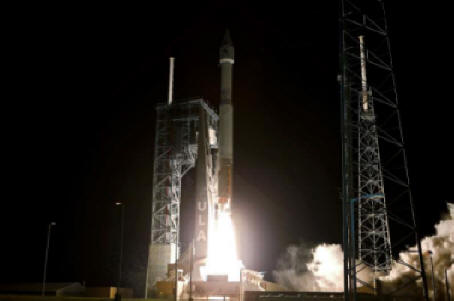|
|
|||
|
|
|||
Pakistan's premier website that covers current affairs and news.
Solar Orbiter spacecraft begins journey to the sun's unseen polar regions
On Sunday, the probe launched aboard a United Launch Alliance Atlas V rocket on a decade-long mission to the center of the solar system. Developed by Airbus in collaboration with the European Space Agency and NASA , Solar Orbiter has an ambitious mission: It will image the never-before-seen polar regions of the star, offering an unprecedented look at the forces that shape our cosmic neighborhood.
Good News, Scientists Built a Device That Generates Electricity 'Out of Thin Air'

The Solar Orbiter, the newest spacecraft set to study the mysteries of our sun, has officially begun its journey to our star.
Against the black curtain of night the rocket engines of the twin-stage Atlas V rocket roared to life, right on schedule, at 11:03 p.m. ET, lifting the pencil-tip-shaped payload bay to space. To defy gravity and put its important payload into orbit around the sun, the rocket reached a top speed of 27,000 mph. The mission to study the sun aims to shed light on the ways in which our star interacts with Earth and the rest of the solar system
"The sun is what gives us life and supports us but it also poses dangers," said GŁnther Hasinger, director of science at the European Space Agency, prior to launch. "To understand the sun is actually of vital importance for all of us."
Engro Shuts Down Karachi Office
The daring plot to cozy up to the solar system's furnace comes 18 months after NASA launched a solar explorer all on its own: Parker Solar Probe.
To read more on latest discoveries, please subscribe to the Discover magazine
Share your views at editor.newsflash@gmail.com
In December 2019, scientists and researchers working on the Parker mission released the first batch of results from Parker's close approach to the sun. The data drop revealed interesting dynamics of the atomic particles and magnetic fields within the solar wind, but left sun scientists with even more mysteries to unravel.
With Sunday's launch, the pace of discovery is set to double. Solar Orbiter and Parker will work in tandem in the wild environment surrounding the sun, trying to understand exactly what makes it up, how it changes over time and what that means for life on Earth and for the solar system.
Sun twins
NASA already has one solar explorer, the Parker Solar Probe, studying the sun's outer atmosphere and the solar winds that whip out from the star. Launched in August 2018, Parker took a straight shot to the center of the solar system, with a handy gravity assist delivered by Venus .
In late January, the probe smashed two space records, becoming the fastest human-made object ever and the closest object to the sun. NASA has often said Parker will "touch the sun" as it gets within 5 million miles of the "surface."
Solar Orbiter will maintain a distance of about 26 million miles at its closest approached. The ESA spacecraft's mission is less about "touching the sun" and more about staring wistfully from across the room. However, over the next decade it will use gravity assists from Venus to change the angle of its orbit. That will send it into a high latitude orbit, pushing it off the ecliptic plane the planets in our solar system spin around the sun on, by up to 34 degrees.
Such an orbit will give it a chance to fly closer to the north and south poles of the sun with its suite of 10 instruments, giving it the first chance to image regions that have never been photographed before.
Solar Orbiter's instruments
The spacecraft contains six remote-sensing instruments and four "in-situ" instruments, which take measurements on board and beam the data back to controllers on Earth.
Remote-sensing instruments:
Extreme Ultraviolet Imager
Coronagraph
Polarimetric and Helioseismic Imager
Heliospheric Imager
Spectral Imaging of the Coronal Environment
X-ray Spectrometer/Telescope
The in-situ instruments analyze a number of features and elements of the solar wind like energetic particles, magnetic fields and plasma waves, in much the same way Parker Solar Probe does.
Energetic Particle Detector
Magnetometer
Radio and Plasma Waves
Solar Wind Plasma Analyser
Arrival
Solar Orbiter will separate from the Atlas V rocket approximately 50 minutes after launch, at which time it will head away from the Earth and into an orbit around the sun. On Dec. 26, it will swing past Venus for a gravity assist, which will help it get closer to the star. Next year it will use Venus and Earth to swing into an even closer orbit, bringing it closer to the sun than Mercury.
Solar Orbiter will coast around the sun until Feb. 18, 2025, at which point a Venus flyby will throw it out of the ecliptic plane by approximately 17 degrees. The gravity bump will give the spacecraft its first chance to see the sun's polar regions. A flyby in June 2029 will increase its angle to 33 degrees.
Posted on February 11, 2020
Australia's raging fires will create big problems for fresh drinking water
NASA details its science experiments for the moon
Ali Khamenei: Iran's most powerful man
Send your contributions at editor@newsflash.com.pk

